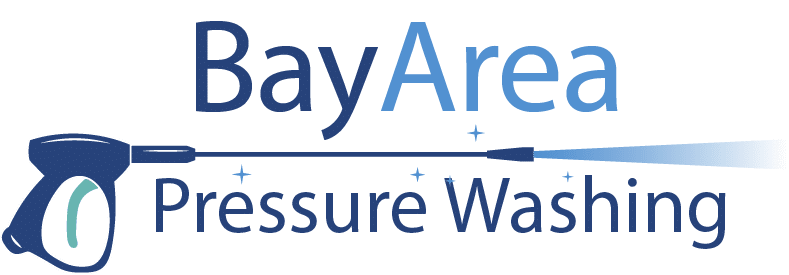
What is the difference between pressure washing and power washing?
Introduction
When it comes to cleaning the exterior of your home or business, pressure washing and power washing are two popular methods that can help you achieve a clean and fresh look. While both techniques involve the use of high-pressure water to remove dirt, grime, and stains, there are subtle differences between pressure washing and power washing. In this article, we will explore these differences and help you determine which method is best suited for your cleaning needs.
Table of Contents
-
What is Pressure Washing?
-
What is Power Washing?
-
The Difference Between Pressure Washing and Power Washing
-
Which Method Should You Choose?
-
Key Takeaways
-
Frequently Asked Questions
-
Conclusion
What is Pressure Washing?
Pressure washing is a cleaning method that uses a high-pressure water spray to remove dirt, dust, mold, mildew, and other contaminants from surfaces. It is commonly used on outdoor surfaces such as sidewalks, driveways, decks, and fences. The pressure washing machine typically delivers water at a pressure between 1300 and 2800 pounds per square inch (psi), depending on the surface being cleaned.
Benefits of Pressure Washing
-
Effective in removing stubborn stains and dirt.
-
Does not require the use of chemicals in most cases.
-
Can be used on a variety of surfaces.
-
Helps restore the appearance of surfaces.
What is Power Washing?
Power washing is a similar cleaning method to pressure washing, but with one key difference – the use of heated water. Power washers have an additional heating element that heats the water before it is sprayed onto the surface. The combination of high-pressure water and heat makes power washing more effective in removing oil, grease, and other tough stains. Power washing is commonly used in industrial and commercial settings where heavy-duty cleaning is required.
Benefits of Power Washing
-
Removes tough stains and grease more effectively.
-
Can be used on a variety of surfaces.
-
Helps kill bacteria and mold with the use of hot water.
The Difference Between Pressure Washing and Power Washing
The main difference between pressure washing and power washing lies in the temperature of the water used. Pressure washing uses regular cold water, while power washing utilizes hot water. This temperature difference gives power washing an advantage in removing tough stains, grease, and oil. Additionally, power washing can help kill bacteria and mold due to the hot water’s sanitizing properties.
Another difference between the two methods is the pressure level. Power washers typically produce a higher pressure than pressure washers, which can be beneficial for tackling heavy-duty cleaning tasks. However, it’s important to note that excessive pressure can cause damage to certain surfaces, so caution should be exercised when using power washing equipment.
It’s worth mentioning that both pressure washing and power washing require expertise and proper technique to achieve optimal results. Hiring a professional cleaning service that specializes in either method can ensure that your surfaces are cleaned effectively and without any damage.
Which Method Should You Choose?
Choosing between pressure washing and power washing ultimately depends on your specific cleaning needs. Here are some factors to consider:
-
The type of surface you need to clean – If you are dealing with a delicate surface, such as a wooden deck, pressure washing may be the safer option to avoid potential damage.
-
The type of stains or contaminants you are dealing with – If you have stubborn oil stains or grease buildup, power washing may be more effective in removing them.
-
Your budget – Power washing tends to be more expensive due to the additional heating element, so if your cleaning needs can be met with pressure washing, it may be the more cost-effective choice.
Ultimately, it’s recommended to consult with a professional cleaning service to assess your specific cleaning needs and determine the most suitable method for your situation. They can provide expert advice and ensure your surfaces are cleaned effectively and safely.
Key Takeaways
-
Pressure washing and power washing are two methods used to clean the exterior surfaces of homes and businesses.
-
Pressure washing uses cold water at high pressure to remove dirt and stains, while power washing utilizes hot water for more effective cleaning.
-
Power washing is particularly useful for removing tough stains, grease, and oil.
-
Choosing between the two methods depends on factors such as the type of surface and the type of stains or contaminants.
-
Consulting with a professional cleaning service can help you determine the best method for your cleaning needs.
Frequently Asked Questions
Is pressure washing safe for all surfaces?
While pressure washing can be used on a variety of surfaces, it’s important to exercise caution and adjust the pressure accordingly. Delicate surfaces such as wood or vinyl siding may require lower pressure to avoid damage. It’s recommended to consult with a professional or refer to the manufacturer’s guidelines before pressure washing.
Can power washing damage surfaces?
Power washing, if not used properly, can potentially cause damage to certain surfaces. The combination of hot water and high pressure can be too harsh for delicate materials. It’s important to hire a professional or follow the manufacturer’s guidelines to ensure safe and effective power washing.
Conclusion
Pressure washing and power washing are both effective methods for cleaning the exterior of your home or business. While pressure washing uses cold water at high pressure, power washing utilizes hot water for more effective stain and grease removal. Understanding the differences between the two methods and considering your specific cleaning needs will help you make an informed decision. Whether you choose pressure washing or power washing, hiring a professional cleaning service can ensure that your surfaces are cleaned effectively and without damage.

